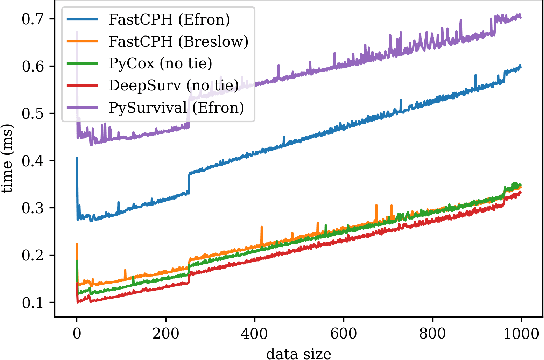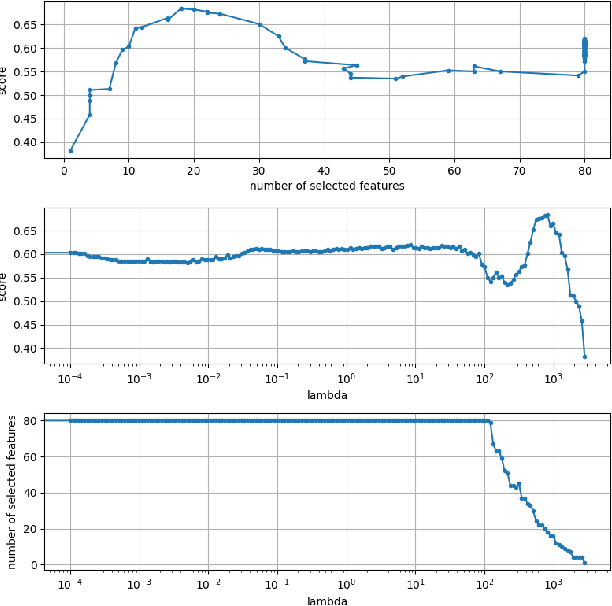Petr Smirnov
FastCPH: Efficient Survival Analysis for Neural Networks
Aug 21, 2022



Abstract:The Cox proportional hazards model is a canonical method in survival analysis for prediction of the life expectancy of a patient given clinical or genetic covariates -- it is a linear model in its original form. In recent years, several methods have been proposed to generalize the Cox model to neural networks, but none of these are both numerically correct and computationally efficient. We propose FastCPH, a new method that runs in linear time and supports both the standard Breslow and Efron methods for tied events. We also demonstrate the performance of FastCPH combined with LassoNet, a neural network that provides interpretability through feature sparsity, on survival datasets. The final procedure is efficient, selects useful covariates and outperforms existing CoxPH approaches.
Reducing Adversarial Example Transferability Using Gradient Regularization
Apr 16, 2019



Abstract:Deep learning algorithms have increasingly been shown to lack robustness to simple adversarial examples (AdvX). An equally troubling observation is that these adversarial examples transfer between different architectures trained on different datasets. We investigate the transferability of adversarial examples between models using the angle between the input-output Jacobians of different models. To demonstrate the relevance of this approach, we perform case studies that involve jointly training pairs of models. These case studies empirically justify the theoretical intuitions for why the angle between gradients is a fundamental quantity in AdvX transferability. Furthermore, we consider the asymmetry of AdvX transferability between two models of the same architecture and explain it in terms of differences in gradient norms between the models. Lastly, we provide a simple modification to existing training setups that reduces transferability of adversarial examples between pairs of models.
Stochastic Combinatorial Ensembles for Defending Against Adversarial Examples
Sep 08, 2018



Abstract:Many deep learning algorithms can be easily fooled with simple adversarial examples. To address the limitations of existing defenses, we devised a probabilistic framework that can generate an exponentially large ensemble of models from a single model with just a linear cost. This framework takes advantage of neural network depth and stochastically decides whether or not to insert noise removal operators such as VAEs between layers. We show empirically the important role that model gradients have when it comes to determining transferability of adversarial examples, and take advantage of this result to demonstrate that it is possible to train models with limited adversarial attack transferability. Additionally, we propose a detection method based on metric learning in order to detect adversarial examples that have no hope of being cleaned of maliciously engineered noise.
Dr.VAE: Drug Response Variational Autoencoder
Jul 06, 2017



Abstract:We present two deep generative models based on Variational Autoencoders to improve the accuracy of drug response prediction. Our models, Perturbation Variational Autoencoder and its semi-supervised extension, Drug Response Variational Autoencoder (Dr.VAE), learn latent representation of the underlying gene states before and after drug application that depend on: (i) drug-induced biological change of each gene and (ii) overall treatment response outcome. Our VAE-based models outperform the current published benchmarks in the field by anywhere from 3 to 11% AUROC and 2 to 30% AUPR. In addition, we found that better reconstruction accuracy does not necessarily lead to improvement in classification accuracy and that jointly trained models perform better than models that minimize reconstruction error independently.
 Add to Chrome
Add to Chrome Add to Firefox
Add to Firefox Add to Edge
Add to Edge